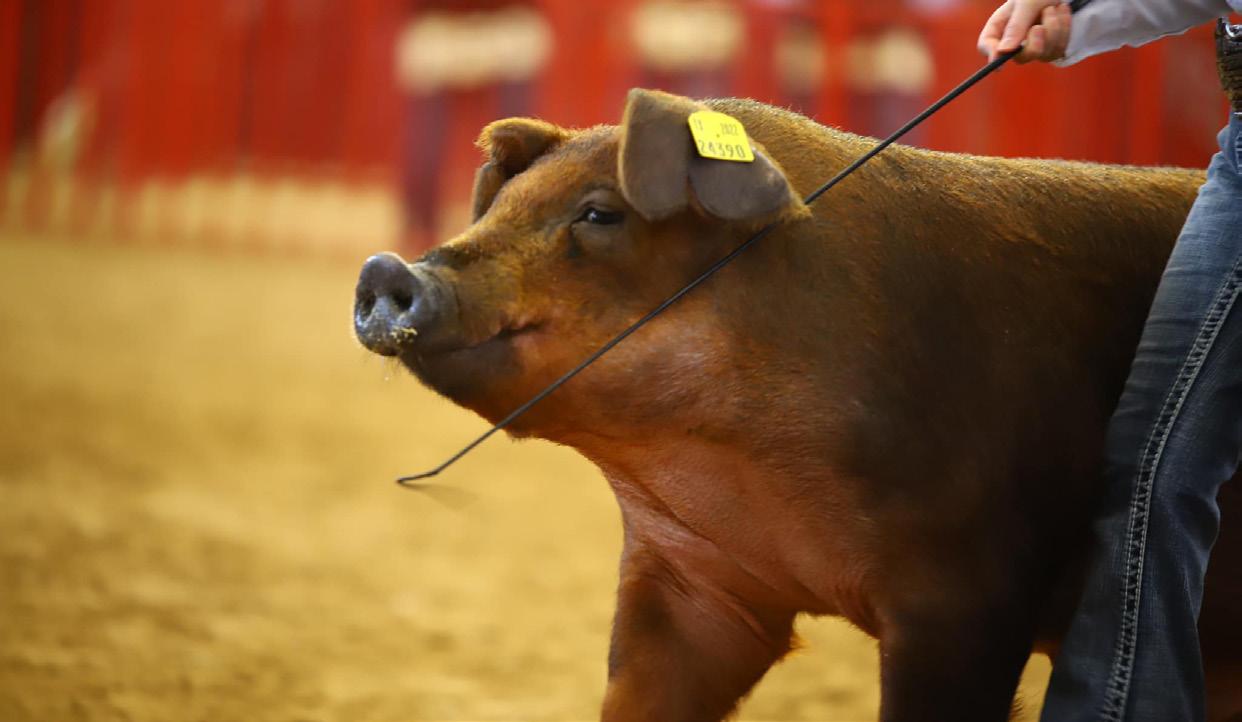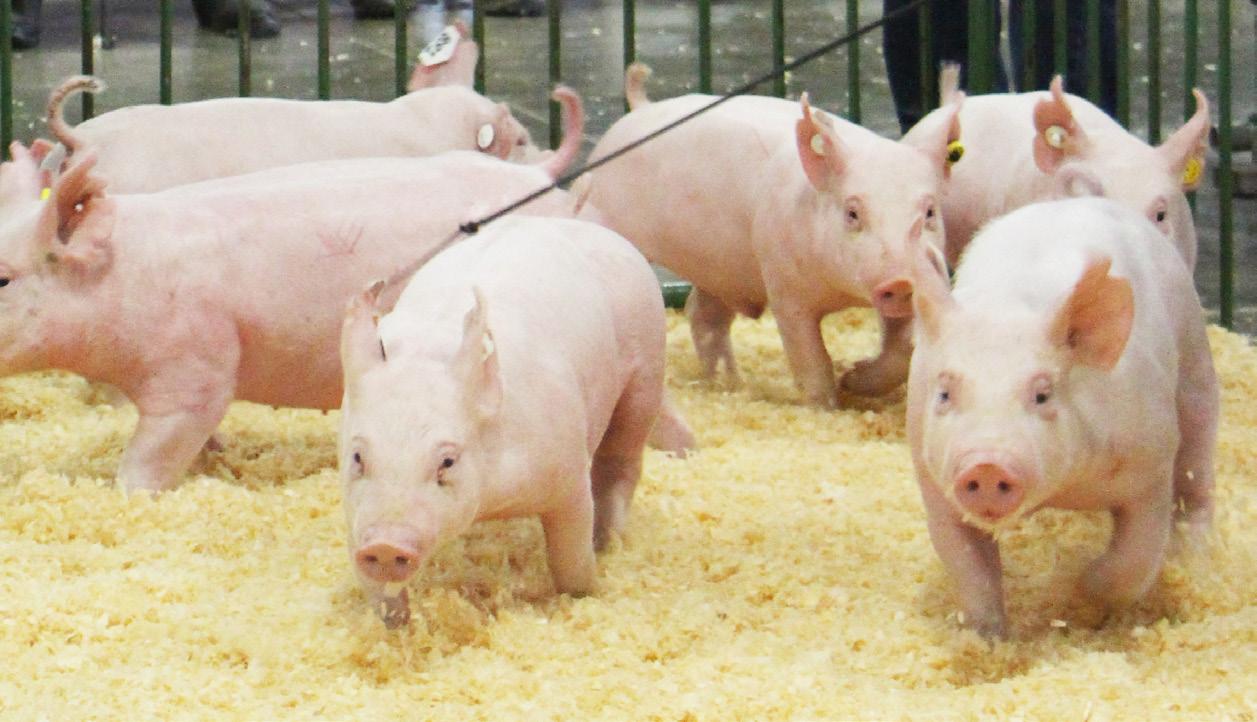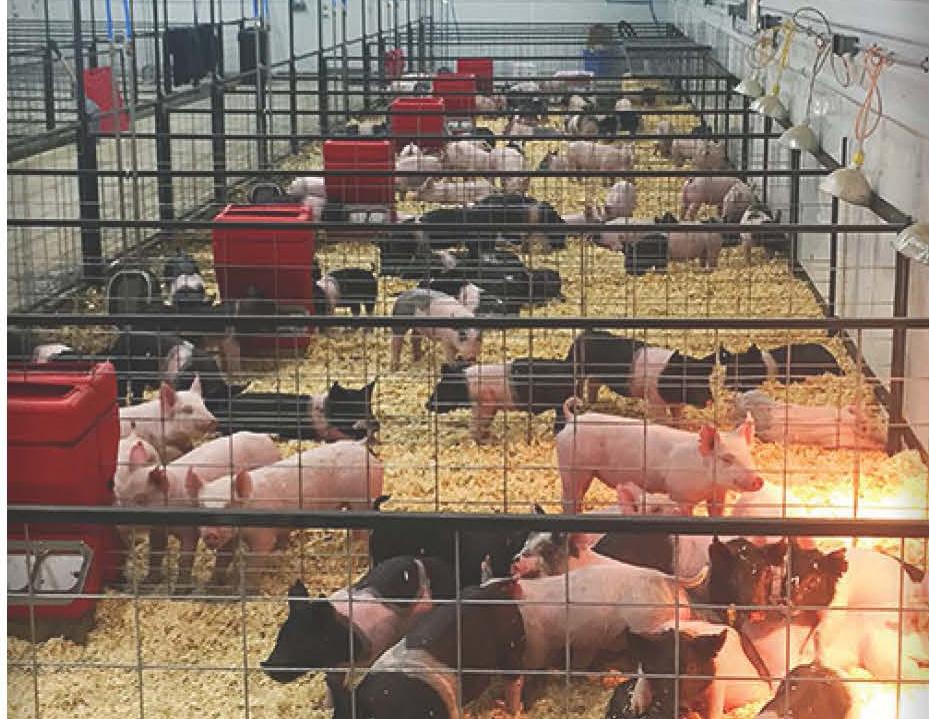
5 minute read
Putting Your Best Foot Forward
from August PC 2022
Feature Putting your best foot forward
Tips and tricks on how to manage your new show projects this show season



“Purchasing baby pigs for a major show is a fresh start for you and your show pigs,” said Christi Seidenberger. “When it comes to preventing illness amongst baby pigs, it is best to be proactive versus reactive.” As pig buying season begins for the 2023 major show season, everyone has hopes to keep their show projects on track. However, we sometimes often overlook simple practices that could prevent our new group of show barrows and gilts from succeeding in the future.
Starting with a Clean Slate The Seidenberger family from Garden City, Texas, has had much success amongst the Texas major shows, including Owen Seidenberger being named a Certified Texas Bred Registry Premier Exhibitor in 2022. However, as we all know, success does not happen overnight. Christi, mother to the Seidenberger family, said they set the foundation for their upcoming show projects with a fresh and sanitized barn. “We start our season off by power washing, bleaching, and disinfecting any surfaces previously touched by other
pigs,” Seideberger said. “This includes all pens, feeders, waterers, mats, and our trailer, just to name a few.” After every aspect of their facilities are clean, the Seidenberger family takes further measures to ensure their barns are a safe place for incoming show pigs. To prevent illness, the family said they wear disinfected shoes in their barn. “Shoes that were worn at stockshows, sales, or any other barn are absolutely not allowed in our barns at home,” Seidenberger explained. “We have an ample amount of show coverings for visitors and keep Tek-Trol disinfectant near every entrance to our barn for visitors.” Although the Reep family no longer has show pigs of their own, Cody Reep still enjoys helping other families at Texas major shows. Over the last 14 years, Reep agreed to take intense sanitation measures before allowing new pigs to enter their barn. “Prior to picking up babies, we always sanitized our trailer as much as we sanitized our barn,” Reep said. “We would Tek-Trol our barn and trailer prior to picking up our new show projects. After our new pigs entered the barn, we would spray a product called Intervention diluted with water on our aisles throughout the barn after cleaning pens. This was a way to ensure all potential illnesses from outside sources were being prevented as soon as possible.”
Taking the Next Step Although sanitation measures are critical at the beginning of show season, the Seidenberger and Reep families said they favored taking extra measures for each individual pig. “Regardless of where the pig comes from, each pig gets a exceed injection and dectomax upon arriving to our barn,” Seidenberger said. “We also tend to utilize our mediator system and keep a working relationship with our veterinarian as a backup precaution.” In addition to watching for signs of illness, Reep said he continues a deworming program for as long as possible. “When new show pigs enter our barn, I like to give them all Draxxin and worm them with Safeguard every 15 days for the first 60 days they are at our farm,” Reep said. “After the 60 days are finished, I continue to worm them every 30 days.” Keeping track of this information for each pig may seem overwhelming; however, there are many ways to record this data to ensure your projects stay on the right track. “Our family always had a giant whiteboard divided with electrical tape to signify each pen,” Reep said. “It may seem strange, but it allowed us all to stay on the same page in terms of vaccinations, feed, and weights when the time came. If needed, we always had a spiral labeled with each pig’s identification at the top to record more detailed information.” In addition to taking the next step with your new show pigs, there are many ways to go about “breaking them in” to ensure you are headed in the right direction. “Honestly, the younger you start working with your show pigs, the better,” Reep said. “From the day you bring them home, start spending time with each pig so you can build up their trust. Once this is established, then you can begin to train them. There are many directions you could go from there, but always remember that building the initial connection is key.”
The Transition to Your Feeding Program There are many ways you can transition each show pig into your feeding program once they enter your barn. Although it comes down to personal preference, the Seidenberger family said they like to begin feeding their show pigs with what would be best for each pig. “We prefer starting our pigs on the ration that works best for them,” Christi said. “Whatever ration allows our pigs to grow and just be a pig without the concern of what the breeder had them of previously because sometimes that information is simply unavailable.” No matter how you begin your feeding program, we all know the struggle of ensuring that all of your show pigs keep eating. Even though we wish there were a cure-all method to this issue, Reep said he has had luck with a few different techniques. “If one goes off of feed once they get home, I immediately check if their feed was fresh,” Reep said. “Sometimes we would utilize leftover feed from previous years, so that could be the root of the problem. If necessary, we would use B-12 supplements or dirt from outside for another way to them consume iron.” All in all, as Seidenberger mentioned, it is better to be proactive versus reactive. By staying ahead of the game at the beginning of the show season, you will set the foundation for success for yourself and your show projects.






